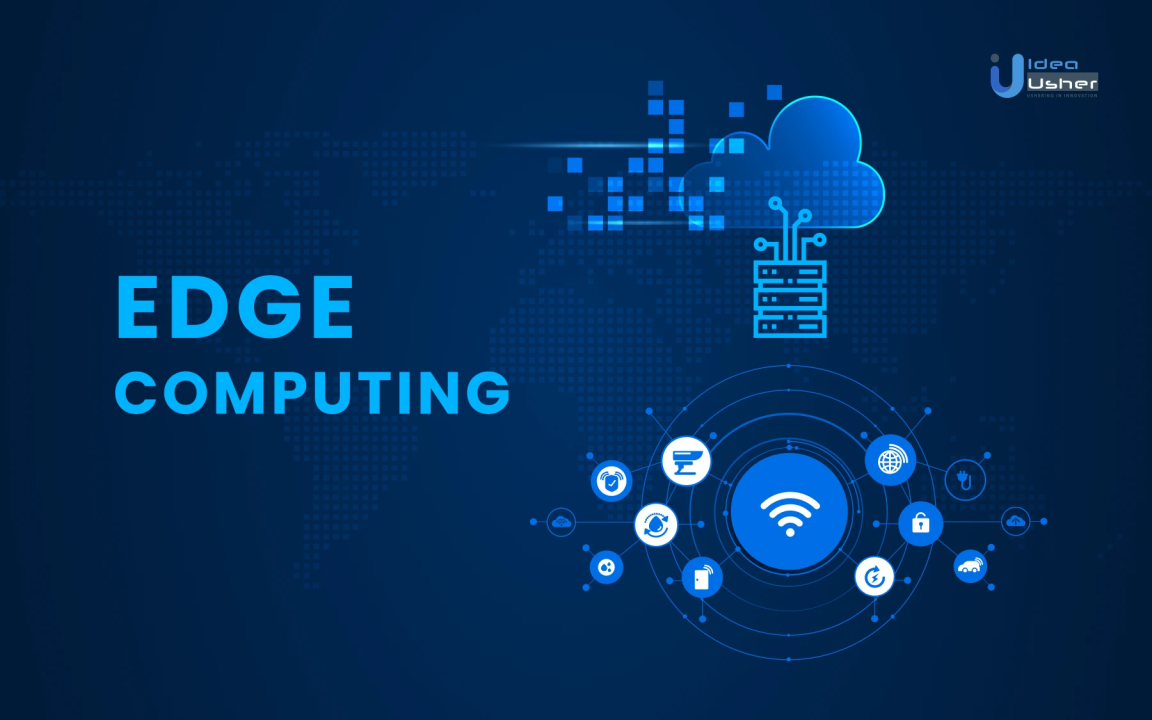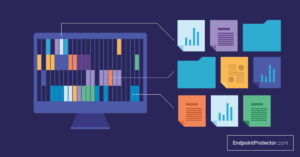“Edge Computing: Empowering Real-time Performance for Latency-sensitive Applications”
Edge computing refers to the practice of processing data closer to its source, at the edge of the network, rather than relying on a centralized cloud infrastructure. This approach offers several benefits, particularly for latency-sensitive applications that require real-time or near real-time processing. In this article, we will explore some of the key use cases where edge computing can enhance the performance and efficiency of such applications.
Real-time video analytics in edge computing
Edge Computing Use Cases: Enhancing Latency-sensitive Applications
Real-time video analytics in edge computing
In today’s fast-paced world, where data is generated at an unprecedented rate, the need for real-time analytics has become more critical than ever. Traditional cloud computing architectures, while powerful, often struggle to meet the demands of latency-sensitive applications. This is where edge computing comes into play, offering a decentralized approach that brings computation closer to the data source. One of the most promising use cases of edge computing is real-time video analytics.
Real-time video analytics involves processing and analyzing video data as it is being captured, enabling immediate insights and actions. This technology has numerous applications across various industries, including security, retail, transportation, and healthcare. However, the latency requirements of real-time video analytics pose significant challenges for traditional cloud-based solutions. This is where edge computing shines, providing the necessary computing power and low-latency processing capabilities.
By deploying edge computing nodes at the edge of the network, closer to the video sources, real-time video analytics can be performed with minimal delay. This is particularly crucial in security applications, where immediate detection and response to potential threats are paramount. With edge computing, video feeds from surveillance cameras can be analyzed in real-time, allowing for instant identification of suspicious activities or objects. This enables security personnel to take immediate action, preventing potential incidents before they escalate.
In the retail industry, real-time video analytics can revolutionize customer experience and operational efficiency. By analyzing video feeds from in-store cameras, retailers can gain valuable insights into customer behavior, such as foot traffic patterns, product interactions, and queue lengths. This information can be used to optimize store layouts, improve product placements, and enhance customer service. With edge computing, these analytics can be performed in real-time, enabling retailers to make immediate adjustments and provide personalized experiences to their customers.
Transportation is another industry that can greatly benefit from real-time video analytics in edge computing. By analyzing video feeds from traffic cameras, edge computing nodes can detect traffic congestion, accidents, or other incidents in real-time. This information can be used to optimize traffic flow, reroute vehicles, and improve overall road safety. Additionally, edge computing can enable real-time video analytics in autonomous vehicles, allowing them to make split-second decisions based on the analyzed data, enhancing their safety and efficiency.
In the healthcare sector, real-time video analytics in edge computing can have life-saving implications. By analyzing video feeds from medical devices or patient monitoring systems, edge computing nodes can detect anomalies or critical events in real-time. This enables healthcare professionals to respond immediately, providing timely interventions and potentially saving lives. Furthermore, edge computing can facilitate remote patient monitoring, allowing healthcare providers to monitor patients’ vital signs and well-being in real-time, even from a distance.
In conclusion, real-time video analytics is a powerful application of edge computing that enhances latency-sensitive applications. By bringing computation closer to the data source, edge computing enables real-time analysis of video feeds, providing immediate insights and actions. From security and retail to transportation and healthcare, the benefits of real-time video analytics in edge computing are vast. With its low-latency processing capabilities, edge computing is revolutionizing industries and paving the way for a more connected and efficient future.
Edge computing for autonomous vehicles
Edge Computing for Autonomous Vehicles
Edge computing has emerged as a game-changing technology that is revolutionizing various industries. One of the sectors that can greatly benefit from edge computing is autonomous vehicles. With the increasing demand for self-driving cars, the need for real-time data processing and low latency has become paramount. In this article, we will explore how edge computing can enhance the performance of autonomous vehicles and enable them to navigate safely and efficiently.
Autonomous vehicles rely on a multitude of sensors and cameras to perceive their surroundings and make informed decisions. These sensors generate an enormous amount of data that needs to be processed in real-time. Traditional cloud computing models, where data is sent to a remote server for processing, are not suitable for autonomous vehicles due to the latency involved. Even a few milliseconds of delay can have catastrophic consequences in a fast-paced driving environment.
This is where edge computing comes into play. By bringing the computing power closer to the source of data generation, edge computing reduces the latency and enables real-time decision-making. In the context of autonomous vehicles, edge computing can be deployed in various ways to enhance their performance.
One of the key use cases of edge computing in autonomous vehicles is object detection and recognition. The ability to accurately detect and recognize objects in real-time is crucial for the safe operation of self-driving cars. Edge computing allows the processing of sensor data at the edge of the network, enabling faster object detection and reducing the response time. This ensures that autonomous vehicles can quickly identify and react to potential obstacles or hazards on the road.
Another use case of edge computing in autonomous vehicles is map data processing. Self-driving cars heavily rely on high-definition maps to navigate their surroundings. These maps contain detailed information about road conditions, traffic patterns, and other relevant data. By leveraging edge computing, autonomous vehicles can process map data locally, reducing the dependency on cloud servers and enabling faster updates to the maps. This ensures that self-driving cars have access to the most up-to-date and accurate information, enhancing their navigation capabilities.
Edge computing also plays a crucial role in enabling vehicle-to-vehicle (V2V) and vehicle-to-infrastructure (V2I) communication. Autonomous vehicles need to communicate with each other and with the surrounding infrastructure to ensure safe and efficient driving. Edge computing allows for low-latency communication between vehicles and infrastructure, enabling real-time exchange of information. This facilitates cooperative driving, where vehicles can share information about road conditions, traffic congestion, and other relevant data, leading to smoother traffic flow and improved safety.
Furthermore, edge computing can enhance the cybersecurity of autonomous vehicles. With the increasing connectivity of self-driving cars, the risk of cyber-attacks also rises. Edge computing can provide an additional layer of security by analyzing and filtering data at the edge of the network. This helps in detecting and mitigating potential threats in real-time, ensuring the integrity and safety of autonomous vehicles.
In conclusion, edge computing has immense potential in enhancing the performance of autonomous vehicles. By reducing latency and enabling real-time data processing, edge computing can significantly improve object detection, map data processing, communication, and cybersecurity in self-driving cars. As the demand for autonomous vehicles continues to grow, the adoption of edge computing will play a crucial role in ensuring their safe and efficient operation on our roads.
Edge computing in healthcare for remote patient monitoring
Edge Computing in Healthcare for Remote Patient Monitoring
In recent years, edge computing has emerged as a game-changing technology that has the potential to revolutionize various industries. One such industry that stands to benefit greatly from edge computing is healthcare, particularly in the area of remote patient monitoring. With the ability to process data closer to the source, edge computing offers significant advantages in terms of reducing latency and improving the overall efficiency of healthcare systems.
Remote patient monitoring has gained traction in recent years as a means to provide healthcare services to patients who are unable to visit a healthcare facility regularly. This approach involves the use of various sensors and devices that collect vital signs and other health-related data from patients in their own homes. Traditionally, this data would be transmitted to a centralized server for processing and analysis. However, this approach often suffers from latency issues, as the data has to travel over long distances before it can be acted upon.
This is where edge computing comes into play. By deploying edge computing infrastructure closer to the patients, healthcare providers can significantly reduce the latency associated with remote patient monitoring. The data collected by the sensors and devices can be processed and analyzed at the edge, allowing for real-time insights and immediate actions to be taken. This is particularly crucial in situations where timely interventions can make a significant difference in patient outcomes.
For example, consider a patient with a chronic condition such as heart disease. With remote patient monitoring enabled by edge computing, the patient’s vital signs can be continuously monitored, and any abnormalities can be detected in real-time. If a critical situation arises, such as a sudden increase in heart rate or blood pressure, the edge computing infrastructure can immediately alert the healthcare provider, enabling them to take prompt action. This timely intervention can potentially prevent a life-threatening event and improve the patient’s overall quality of life.
Furthermore, edge computing in healthcare for remote patient monitoring also offers benefits in terms of data privacy and security. With sensitive health data being processed and analyzed at the edge, there is no need for it to be transmitted over long distances to a centralized server. This reduces the risk of data breaches and unauthorized access, ensuring that patient information remains secure and confidential.
In addition to improving patient outcomes and data security, edge computing in healthcare for remote patient monitoring also has the potential to reduce healthcare costs. By enabling early detection of health issues and facilitating timely interventions, edge computing can help prevent costly hospitalizations and emergency room visits. Moreover, the ability to process and analyze data at the edge reduces the need for expensive network bandwidth and storage infrastructure, resulting in cost savings for healthcare providers.
In conclusion, edge computing holds immense potential in enhancing latency-sensitive applications in healthcare, particularly in the realm of remote patient monitoring. By bringing data processing and analysis closer to the source, edge computing reduces latency, improves patient outcomes, enhances data security, and reduces healthcare costs. As the healthcare industry continues to embrace digital transformation, edge computing is poised to play a pivotal role in revolutionizing healthcare delivery and improving patient care.In conclusion, edge computing has proven to be highly beneficial in enhancing latency-sensitive applications. By bringing computing resources closer to the data source, edge computing reduces the latency and improves the overall performance of applications that require real-time or near real-time processing. Some of the key use cases for edge computing include autonomous vehicles, industrial automation, smart cities, and remote healthcare. These applications heavily rely on low latency and high bandwidth, which can be efficiently achieved through edge computing. As technology continues to advance, we can expect edge computing to play an increasingly important role in optimizing latency-sensitive applications.















